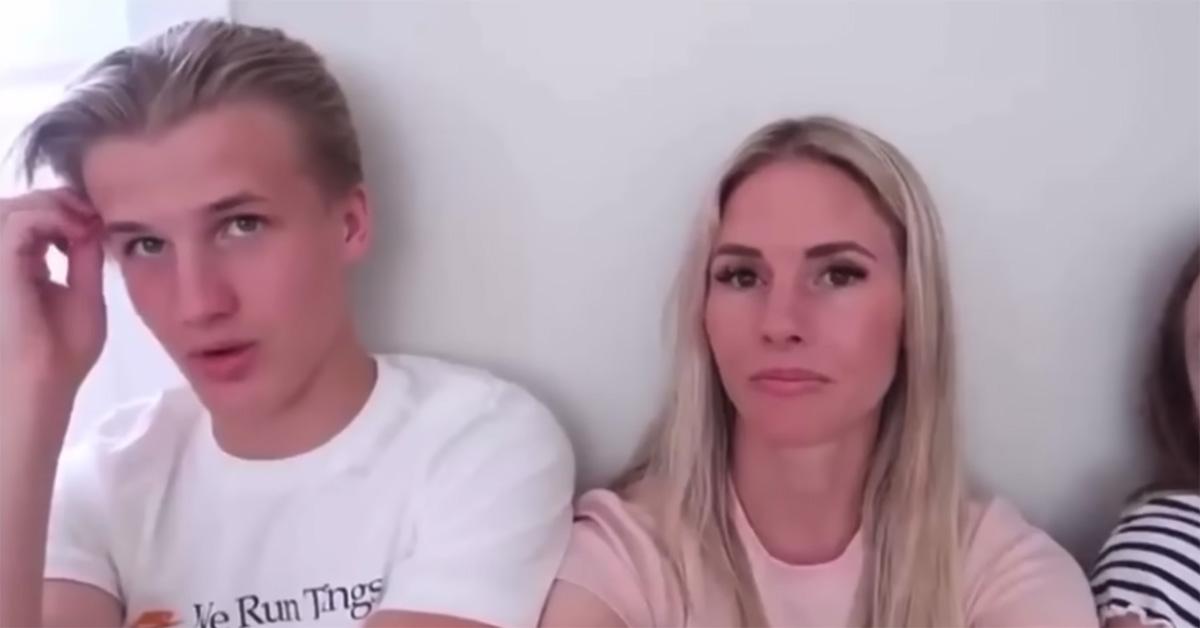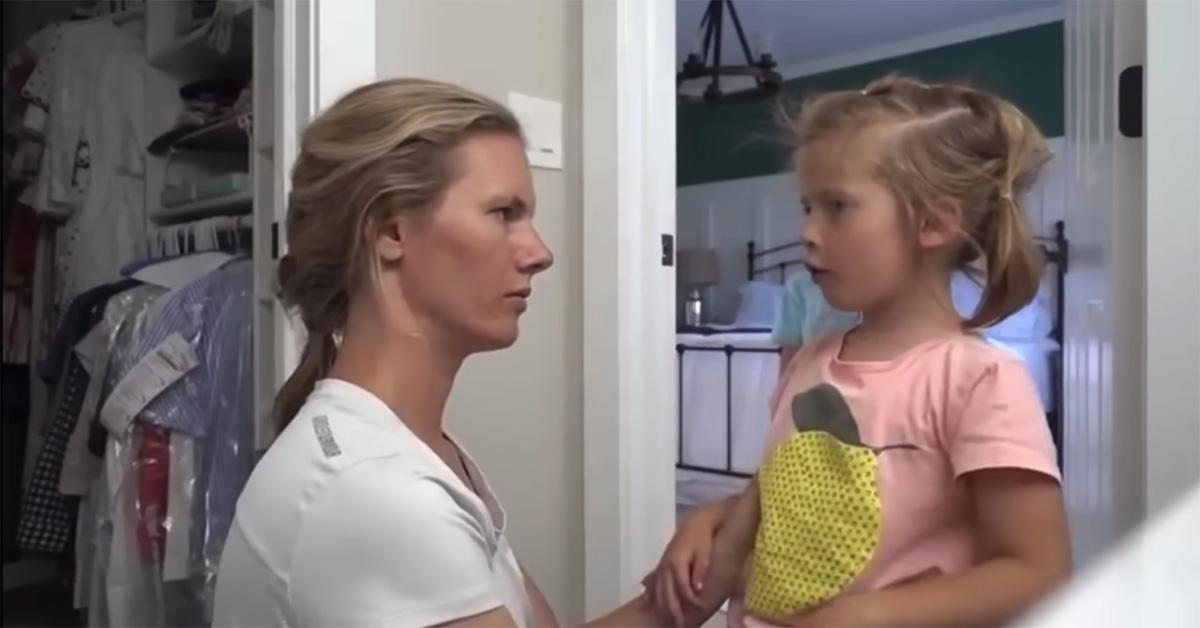Let’s talk about something important, real, and heartfelt: Ruby Franke kids wounds. If you’re here, you’re likely searching for answers, guidance, or just a deeper understanding of how to handle wounds—both physical and emotional—that children face. And trust me, this isn’t just about first aid; it’s about creating a safe space for healing, growth, and love.
Parenting isn’t always sunshine and rainbows, ya know? Sometimes, it’s about the scrapes, the falls, the bruises, and even the emotional scars that come with growing up. Ruby Franke’s journey with her kids has shed light on how we, as parents or caregivers, can navigate the challenges of keeping our little ones safe while teaching them resilience.
From understanding the basics of wound care to recognizing the emotional impact of injuries, this article dives deep into everything you need to know. So grab a cup of coffee, sit back, and let’s get into it, because your kids deserve the best care possible—and so do you!
Read also:Tiktoker Stumbles Into A Millionaires Secrets In A Secondhand Hard Drive Heres His Moral Dilemma
Table of Contents
- Ruby Franke: A Quick Biography
- Understanding Physical Wounds in Kids
- Emotional Wounds: The Invisible Pain
- First Aid Essentials for Ruby Franke Kids Wounds
- Preventing Wounds: Tips and Tricks
- The Role of Nutrition in Wound Healing
- Mental Health and Wound Recovery
- Expert Advice on Ruby Franke Kids Wounds
- Busting Common Myths About Wounds
- Conclusion: Prioritizing Your Child’s Health
Ruby Franke: A Quick Biography
Ruby Franke might not be a household name, but her story resonates deeply with many parents. She’s a mom, a writer, and an advocate for child health and safety. Her experiences navigating the ups and downs of raising kids have inspired countless others to take a closer look at their own practices.
Here’s a quick glimpse into Ruby’s life:
| Full Name | Ruby Franke |
|---|---|
| Occupation | Author, Parenting Advocate |
| Children | 3 kids (ages 5, 8, and 10) |
| Passion | Child health, emotional well-being, and education |
Ruby’s insights into kids’ wounds—both physical and emotional—are rooted in her own experiences. She’s not just sharing advice; she’s offering a lifeline to parents who feel lost in the chaos of parenthood.
Understanding Physical Wounds in Kids
Types of Wounds
Kids are adventurers, and with that adventurous spirit comes the occasional scrape or cut. But not all wounds are created equal. Here’s a breakdown of the most common types:
- Cuts: These happen when the skin is broken by sharp objects. Think paper cuts or kitchen accidents.
- Scrapes: AKA abrasions, these occur when the skin rubs against a rough surface.
- Bruises: Caused by trauma to the skin, these can be painful but are usually less serious.
- Burns: From sunburns to kitchen mishaps, burns require special care.
Understanding the type of wound is key to proper treatment. Ruby Franke emphasizes the importance of assessing the severity before jumping into action.
Emotional Wounds: The Invisible Pain
Recognizing Emotional Scars
While physical wounds are visible, emotional wounds often go unnoticed. As Ruby points out, a fall isn’t just about the scrape on the knee—it’s also about the fear, embarrassment, or frustration that comes with it.
Read also:Who Is Jennifer Aniston Currently Dating A Comprehensive Look At Her Love Life
Here are some signs your child might be dealing with emotional pain:
- Increased clinginess
- Changes in behavior, like aggression or withdrawal
- Difficulty sleeping
- Replaying the event in their mind
It’s crucial to acknowledge these feelings and provide a safe space for expression. Ruby often encourages open conversations with her kids, ensuring they feel heard and understood.
First Aid Essentials for Ruby Franke Kids Wounds
What’s in Your First Aid Kit?
Every home should have a well-stocked first aid kit. Ruby Franke’s kit includes essentials like:
- Antiseptic wipes
- Band-aids in various sizes
- Gauze pads and medical tape
- Pain relievers (for older kids)
- A cold compress
But it’s not just about having the right tools—it’s about knowing how to use them. Ruby always emphasizes the importance of staying calm and reassuring your child during treatment.
Preventing Wounds: Tips and Tricks
Keeping Your Little Adventurers Safe
Prevention is always better than cure. Here are some tips Ruby swears by:
- Teach your kids about safety early on.
- Childproof your home—secure sharp corners, lock cabinets, and install gates.
- Encourage the use of protective gear during outdoor activities.
- Keep an eye out for potential hazards in play areas.
Remember, accidents happen, but being proactive can significantly reduce the risk.
The Role of Nutrition in Wound Healing
Fueling Recovery
Nutrition plays a vital role in wound healing. Ruby Franke’s kids enjoy a balanced diet rich in:
- Protein: Essential for tissue repair.
- Vitamins C and E: Powerful antioxidants that boost healing.
- Zinc: Supports immune function and wound recovery.
- Hydration: Keeps tissues moist and promotes healing.
Feeding your kids nutrient-dense foods isn’t just about preventing wounds—it’s about supporting their overall health and well-being.
Mental Health and Wound Recovery
Healing the Mind Alongside the Body
Mental health is just as important as physical health. Ruby often reminds parents that a child’s emotional state can impact their recovery process. Encourage positivity, practice mindfulness, and seek professional help if needed.
Some activities Ruby recommends include:
- Reading together
- Practicing deep breathing exercises
- Engaging in creative play
These activities not only distract from the pain but also foster emotional resilience.
Expert Advice on Ruby Franke Kids Wounds
What the Experts Say
According to pediatricians and child health experts, Ruby Franke’s approach aligns perfectly with best practices. Studies show that a combination of physical care, emotional support, and proper nutrition leads to faster recovery times.
A report by the American Academy of Pediatrics highlights the importance of:
- Regular check-ups
- Education on wound care
- Encouraging open communication
These guidelines reinforce Ruby’s philosophy of holistic care for kids.
Busting Common Myths About Wounds
Separating Fact from Fiction
There’s a lot of misinformation out there about wound care. Here are some common myths debunked:
- Myth: You should let cuts air out. Fact: Keeping wounds covered helps prevent infection.
- Myth: Peroxide is the best way to clean a wound. Fact: It can damage tissue; gentle soap and water are better.
- Myth: Emotional wounds don’t need attention. Fact: They absolutely do!
Ruby Franke encourages parents to question everything and seek reliable sources for information.
Conclusion: Prioritizing Your Child’s Health
Ruby Franke kids wounds might sound like a specific topic, but it’s really about creating a nurturing environment where your child can thrive. From physical care to emotional support, every step matters.
Here’s a quick recap:
- Understand the types of wounds and their severity.
- Address both physical and emotional pain.
- Prevent wounds through education and preparation.
- Fuel recovery with a balanced diet.
- Seek expert advice when needed.
So, what’s next? Share this article with other parents, leave a comment sharing your own experiences, or check out more resources on child health. Together, we can make a difference—one wound at a time.
Stay strong, stay informed, and most importantly, stay connected with your kids. Because in the end, love and care are the best medicines of all!


